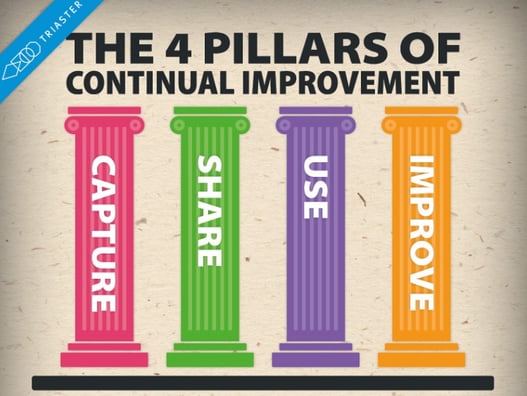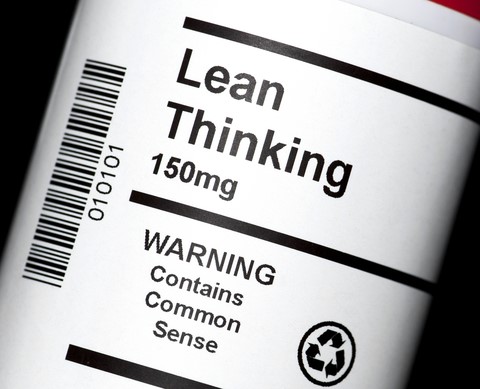I believe that IT should, first and foremost, enable and support the objectives of the business and one of the crucial objectives any business needs is to be fixated on is continuous Improvement. Ultimately, this means to delight the customers - which makes perfect sense as they are the ones who pay for the products and services the business provides.
Despite these insights, traditional IT focuses internally on software, infrastructure, and even on what is commonly referred to as the 'internal customer' or 'business users’ productivity. But does this inward focus translate into increased revenue or Increased reach to more customers? Does it make the firm easier to do business with? Does it lower costs and increase profits? Will it mean better cash flow, speed to market or better products and services which gives a competitive edge?
These questions need to be asked and answered.
This is precisely where Continuous Improvement for IT (CIIT) comes in. CIIT is a philosophy based in Lean which focuses IT away from the internal and towards the external customer. It is a culture shift whereby technology professionals understand the key business drivers first, and then apply technology to meet those drivers.

If you would like to learn about Triaster's continual improvement approach, please read our blog: The 4 Essential pillars of Continual Improvement, to find out how to facilitate lasting change in an organisation.
CIIT aims to continuously eliminate waste and deliver customer value by applying the following Lean Manufacturing principles to IT:
Using Lean Manufacturing Principles and Their Application to Facilitate Continuous Improvement
Value: Value can be described as “anything for which the customer is willing to pay”. To define customer value in terms of IT, you need to look at it from a strategic perspective: How do IT services or projects align with the company’s services and products directly? Which of these has a significant effect at enabling better value delivery of others outside of IT to the customer? Consider the following examples which could arguably increase the value of a company’s products and services to the customer:
- Linking the customer’s inventory and purchasing systems with your ERP to automate the ordering, invoicing, and advanced shipping notice of frequently ordered products
- Providing tailored analytics which helps your customer see how changes to their ordering patterns may save them money
- Automating processes for a manufacturing firm’s purchasing which shortens lead time of raw materials and thus delivers product to the customer sooner

The Value Stream
The value stream is defined as the series of steps required to provide value to the customer. It addresses the question of how IT can assist in the delivery of the product to the customer. It can be improved by IT through faster, and more robust information delivery to those who need it to produce a better quality service in less time at lower costs. Consider the following ways that IT can break down traditional inefficiencies in value streams:
- Real-time delivery of complex metrics which enable decision-makers to act quickly on out-of-standard issues
- Enhanced communications between disparate facilities (such as manufacturing to warehousing to distribution)
- Connecting suppliers’ and customers’ business processes to the ones of the company
- IT also has a unique advantage in helping companies refine and improve their value stream. Due to the fact that all employees of a company generally interact directly with IT in one or the other way, the IT department has access to a holistic view of the company that traditionally siloed parts of the organisation do not
Flow: a value stream with wasteful steps eliminated from the process achieves flow; the idea that value moves through the value stream efficiently and without stopping. IT has the opportunity to help product or service flow through the value stream in many ways, but most notably through seamless flow of information to the business. Consider the following ways that IT can help with flow:
- Minimizing Paper: paper forms drive wait time in a process and companies have access to so many cost-effective technologies today - expandable databases, mobile, collaboration tools - that there is little excuse for a firm’s associates to be pushing paper
- Automating Reporting: a major disruption to the flow of information lies in the amount of time it takes to extract data, compile it in Excel, create graphs and charts, and then communicate it out to those who need to know. Reporting solutions have come a long way from the archaic behemoths of the past. They are easier to connect to data sources, easier to query, fully automated, and provide up-to- the-minute information on a mobile device
- Alerting: IT departments have been using alerting tools for decades for managing networks and servers. IT can apply similar technologies to operations processes. Process control software can alert operators if machinery is experiencing an out of standard condition
Pull: in a pull system, value is only created when the customer demands it; upstream steps in the process only act when their downstream steps indicate a need. Rather than 'pushing' inventory, the value is delivered when the customer wants it. Common approaches to pull systems include Just-In-Time or Continual Replenishment inventory strategies. These systems often have high variability in products, manufacturing, and demand. IT departments can help drive this through better visibility into these sources of variability through reporting, statistical analysis, and enhanced communications between suppliers and customers.
Perfection: the relentless pursuit of perfection is the basis for continuous improvement. How can IT look at both business and IT processes with a critical eye and an aim towards continually making them better in order to better serve the customer? How do we measure our progress towards perfection in a way that makes sense to our business? Think KPIs, metrics, and alignment to strategy.
The proper application of Lean principles to IT will change the department from a group of technologists to a group of ‘business people who understand technology.’ IT employees will start to understand how their business works - what it is that makes customers happy, what drives revenues, how working capital may affect their business.
Business-savvy technologists who understand their business can then begin to apply technology in direct support of these business drivers. They begin to see wastes within both IT and business processes and proactively work with their business partners to drive continuous improvement. Only then can they begin to deliver the value that CEOs actually want out of IT.
Thanks for reading this article. If you would like some information that is tailored to your specific business problems then please fill out the  which aims to find out what problems you are struggling with so we can pair you with the right information...
which aims to find out what problems you are struggling with so we can pair you with the right information...
Related Articles:
3 Reasons why Continuous Improvement Projects Fail
How do I create a culture of continuous improvement?
Value Stream Process Mapping in a BPM System
How Can a BPM System Help Me Achieve Continuous Improvement?
Written by Tim Monahan
Tim Monahan is the Vice President of Consulting Services at The Effective Syndicate, which helps companies and individuals simply be more effective. Tim focuses on the areas of Continuous Improvement, Leadership and Teamwork Development and Strategic Alignment using Lean and Six Sigma approaches, he also helps organisations articulate their goals and implement the operational systems required to accomplish them with excellence.


